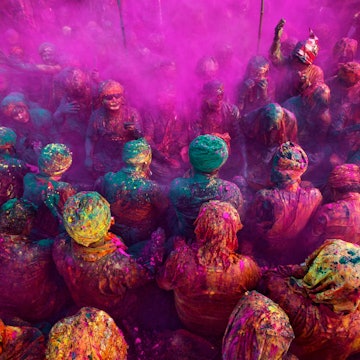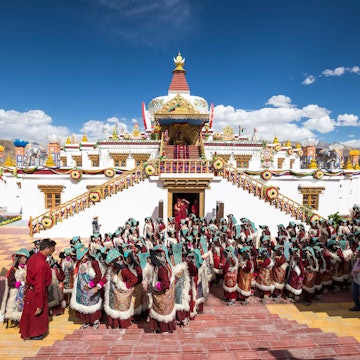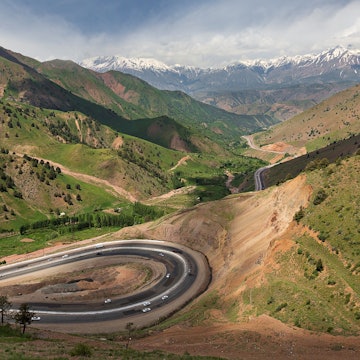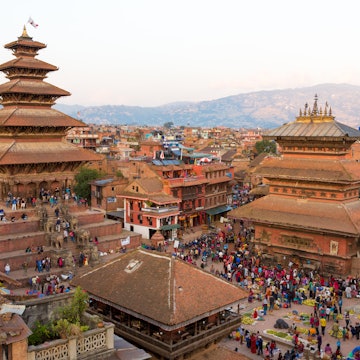

Whether you’re looking for festival fun or the best time to hit the beach or trek the Himalayas, here are the top times to come to India. ferrantraite/Getty Images
India is a country that’s almost a continent. From the sky-high peaks of the Himalayas to the waterlogged jungles of Kerala and the dry-as-a-bone deserts of Gujarat and Rajasthan, this enormous nation covers an astonishing variety of terrain. Whatever time of year you visit India, you'll find that the climate varies as you traverse this vast nation, but there’s always somewhere worth visiting no matter what the weather is doing.
The northern hemisphere winter – from December to March – is the optimum time to visit the vibrant cities and historic temples and forts of north India, while the rainy monsoon period from June to September is the peak season in the dry mountains of Ladakh. South India is warm year-round, but the winter months are drier and cooler than the sticky summer.
Even if you can only get to India at the height of the rainy season, there are plenty of good reasons to visit this remarkable nation – not least the festival calendar, which is packed with action year-round. Here’s our guide to the best times to come to India.

December to March is best for beach days, tiger safaris and temple trips
The peak season for tourism in India coincides with dry skies and warm but not baking temperatures in the plains – in other words, perfect traveling weather. The balmy, sunny days are ideal for visiting India’s teeming cities, and most of the country is ripe for exploration, though it can be frosty in the foothills of the Himalayas.
Even in the steamy south, humidity hovers at manageable levels and temperatures dip overnight, making it easier to sleep, though this is also the time for peak prices almost everywhere. Another hassle is the morning fog, which can disrupt air travel and other forms of transport in the northern plains. However, this is the best time to visit the deserts of Rajasthan, with mild days and cool nights.
December to March is also the sweet spot for lowland adventures. National parks are drier, there’s less greenery for wildlife to hide behind, and animals are more active for longer thanks to the lower temperatures. For a good chance of tiger sightings, head to Kanha, Bandhavgarh, Ranthambhore and other national parks in the central plains.

In the hills, it’s a slightly different story. While there’s an undeniable magic to seeing Shimla dusted with snow, many hotels shut their doors for the winter, and mountain trails and roads over high passes are often blocked by snow, including the main roads to Ladakh (though some hardy travelers still fly in for winter treks). A handful of hill towns in Kashmir, Himachal Pradesh, and Uttarakhand stay open for skiing and other winter sports, but many Ladakh business owners shut up shop and head south to Goa for the season.
December is a big time for Hindu marriage ceremonies – look out for baraat (bridegroom’s processions) featuring a white horse, a nervous groom, and an ear-splitting marching band, often accompanied by noisy fireworks. Christian communities in Goa and parts of Kerala and the Northeast States hang up decorations in the lead-up to Christmas, and Christmas Day is celebrated with feasting and fireworks.

January to March sees some of India's top festivals
In January, all eyes are on Delhi for the pomp and circumstance of Republic Day on January 26 (don’t miss the army and police motorcycle stunt teams). The Hindu festival of Sankranti is celebrated in different ways across India, from special celebrations to honor cows in South India to mass kite-flying in Gujarat.
If you come in February, head to Jaipur for the cultured Jaipur Literature Festival, or Agra for Taj Mahotsav, a 10-day carnival of culture, cuisine and crafts featuring 400 artisans from all over India (and enough regional food to induce a curry coma). Alternatively, make for the hills and join Buddhist communities embracing Losar, the Tibetan New Year. Meanwhile, over in Rajasthan, crowds gather in Jaisalmer for the vividly colorful Desert Festival, complete with mustache competitions and camel races.
Other red-letter days on the calendar include the Hindu festival of Vasant Panchami in January or February, marking the arrival of spring, and the atmospheric Sufi festival of Urs in Ajmer (held in January in 2025). In February or March, you can attend Goa’s lively carnival or honor Lord Shiva at celebrations across the country for Maha Shivaratri; Haridwar, Ujjain and Varanasi are good places to join the celebrations.
Across the country, crowds join in the joyful mayhem as mountains of rainbow-colored powder are thrown around for the festival of Holi in late February or March. If you attend, wear clothing that you won't mind discarding if it gets too stained, and consider wearing sunglasses or goggles to keep powder out of your eyes.

June to November is the best time to hit the Himalayas
India’s shoulder season means different things depending on where you go in the country. The plains are drenched by the monsoon rains from June to September, and Goa’s beach resorts become ghost towns, but backpackers and trekkers flood into the mountains, filling Ladakh’s lodges, tented camps and yoga retreats.
This is the prime time for treks on India’s high-altitude trails, but roads and paths through the foothills turn into torrents, national park trails close, and views disappear behind swirling clouds. That might give an impression of a country besieged by rain, but it doesn’t rain all day every day; there’s still plenty to see and do, with bargain prices for accommodations and tours.
As the rains clear from September, tourism picks up in the plains and the foothills, but tourism in Ladakh winds down for the season, and public buses between Leh and Manali stop running. October and November are great times to visit almost everywhere else in India – prices remain below the peak, skies are clear and the trekking season gets underway in the foothills. This is also a great month to visit desert areas such as Rajasthan, which can be surprisingly green.
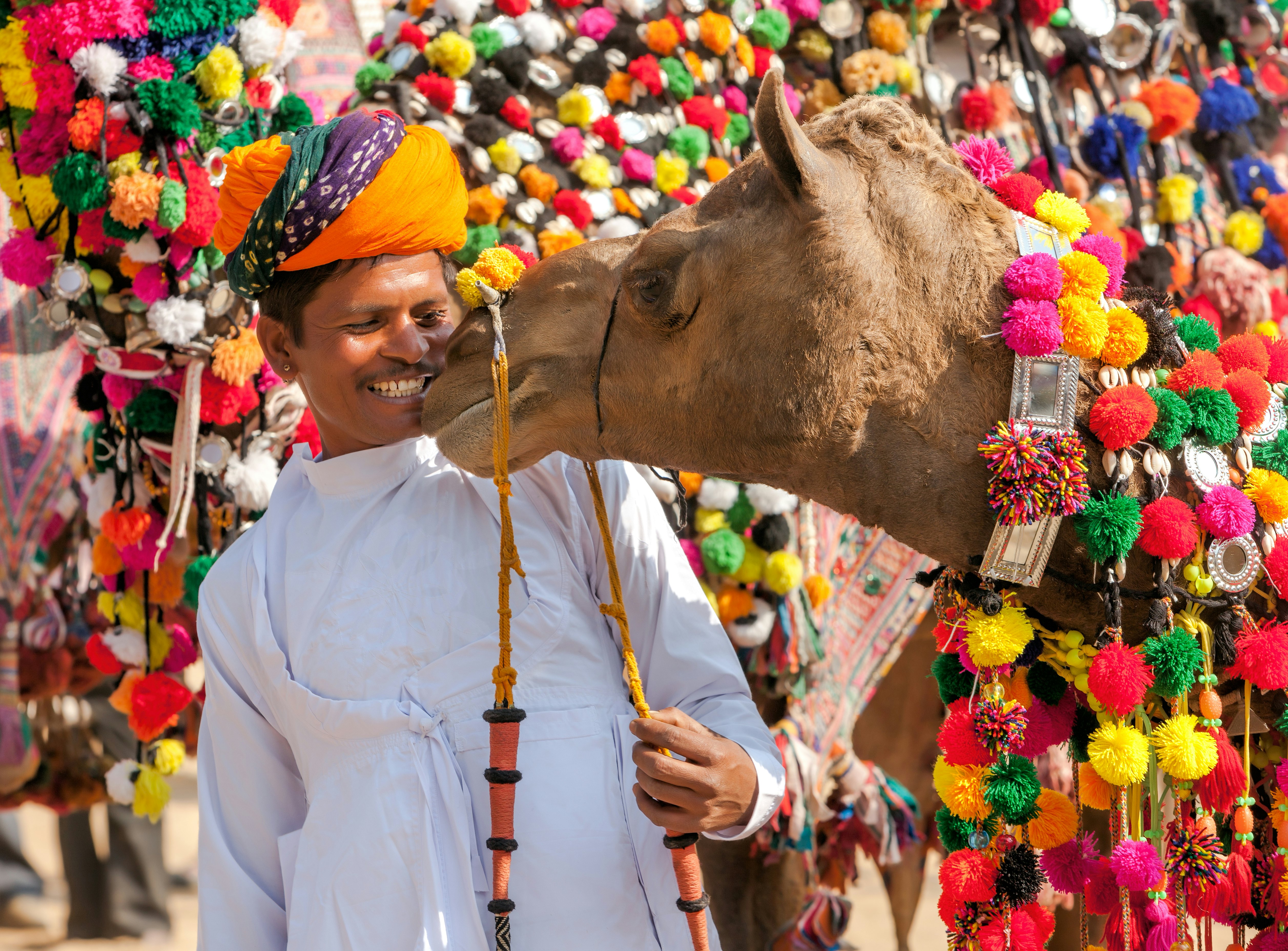
June to November is also a great time for festivals
In June or July, Rath Yatra sees effigies of Lord Jagannath – Vishnu as Lord of the Universe – hauled through the streets on vast, colorful chariots, most famously in Puri in Odisha (Orissa). Buddhist festivals fill the gompas of Ladakh – Hemis Tsechu is a glorious spectacle, with costumed dances and the unfurling of a giant thangka (Buddhist painting) at Hemis Gompa.
August is jam-packed with festival action. Kerala’s exhilarating boat races take place on the second Sunday of August and there are patriotic flag-hoisting ceremonies and parades in Delhi on August 15 to celebrate India’s independence. Falling in August or September, Ganesh Chaturthi sees the ritual immersion of thousands of colorful idols of the elephant-headed god in Mumbai.
There’s more action in October and November, as Hindus honor Durga, the fearsome form of the mother goddess, most famously during the festivals of Navratri and Durga Puja (celebrated enthusiastically in Kolkata and West Bengal). Many areas throw lavish celebrations for Dussehra, celebrating the victory of Hindu god Rama over demon-king Ravana and the triumph of good over evil (festivities are particularly colorful in Kullu and Mysuru).
This is also the season for Diwali (Deepavali), which brings fireworks and twinkling lights to towns and villages across India, and the Camel Fair in Pushkar, which attracts 200,000 people and 50,000 camels, horses, and cattle. Sikhs celebrate Nanak Jayanti – the birthday of Guru Nanak, founder of Sikhism – with prayers, kirtan (devotional singing), and processions, especially in Punjab and Haryana.

April to June is the best time to avoid crowds
India’s low season sees temperatures soaring to occasionally unbearable levels. By May, the lowlands feel like an oven, and locals wait eagerly for the cooling effect of the monsoon. Cities can be uncomfortably hot – sensible travelers head to the hill stations or stay close to water on the coast. The Northeast is wet, but it’s peak season for visiting Sikkim and highland areas of West Bengal, including Darjeeling.
If you can handle the heat, tourists are thinner on the ground, making visits to popular sights such as Delhi’s Red Fort less hectic, and this is a great time for treks in the cooler foothills of the Himalayas. Accommodation prices are also low, though many beachside hotels in Goa close completely from May to September. If you happen to be in Maharashtra, you’re in for a treat as tasty Alphonso mangoes come into season.
Rain doesn’t halt the festival calendar. Mahavir Jayanti commemorates the birth of Jainism’s 24th and most important tirthankar (teacher and enlightened being), while Sikhs celebrate Vaisakhi (the solar new year) in the middle of April. Rama Navami is another big date as Hindus celebrate Rama's birth with processions and enactments of scenes from the Ramayana (one of Hinduism’s most sacred texts).
The Muslim holy month of Ramadan changes date every year – it runs from February to March in 2025 and 2026. Some Muslim-owned businesses close during the day, and people fast from sunrise to sunset. The breaking of the fast at Eid al-Fitr is marked by feasting, and Muslim women adorn their arms with mehndi (henna designs). Hyderabad is a particularly atmospheric place to join the Eid al-Fitr celebrations. The birthday of Buddha (Buddha Jayanti or Buddha Purnima) is celebrated with gusto in Bodhgaya and Tibetan Buddhist areas, usually in May.
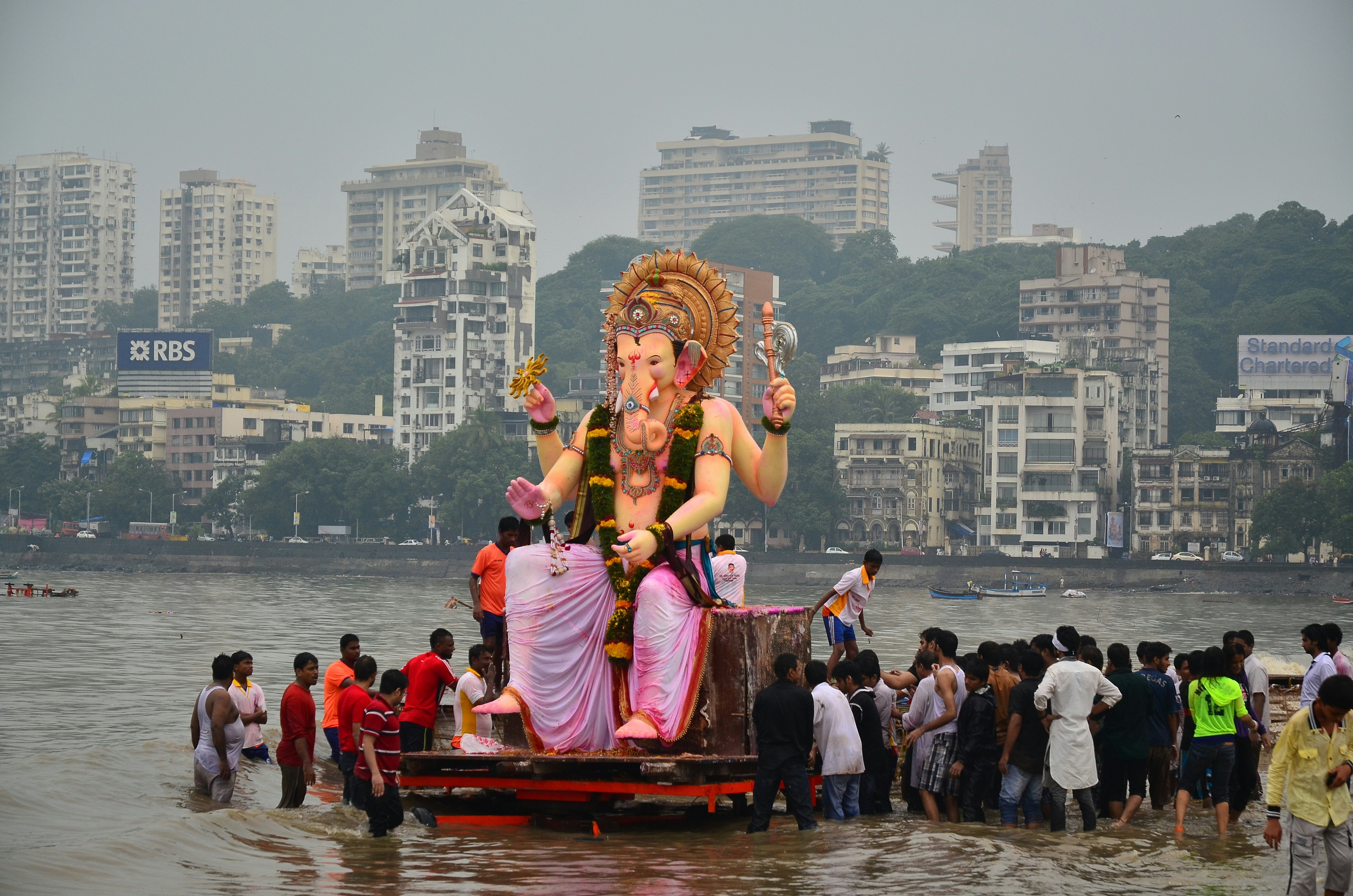
Understanding India’s festival calendar
While secular festivals in India follow the Gregorian calendar, most religious festivals follow a variety of lunar calendars, so the dates change every year. Muslim celebrations move forward by 11 days every year relative to the Gregorian calendar, and Hindu, Buddhist, and Jain festivals can fall in different months from year to year. Always check the dates of festivals before planning a trip – the Indian government has a calendar of the year's gazetted government holidays.








